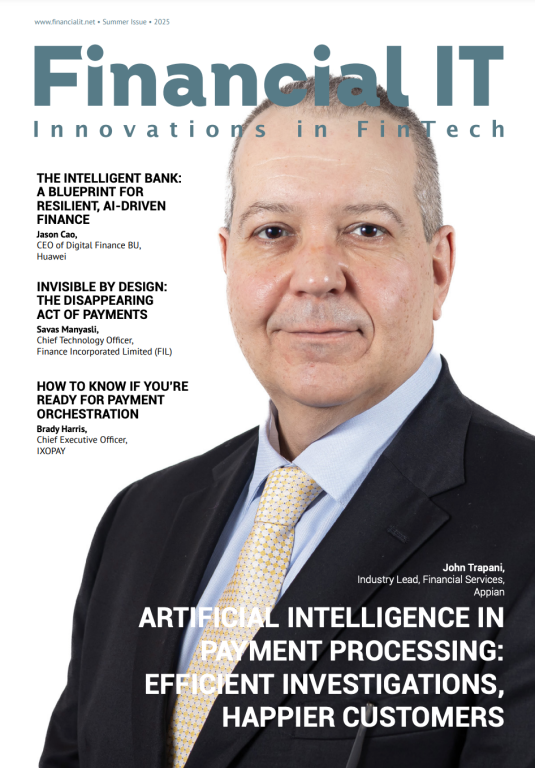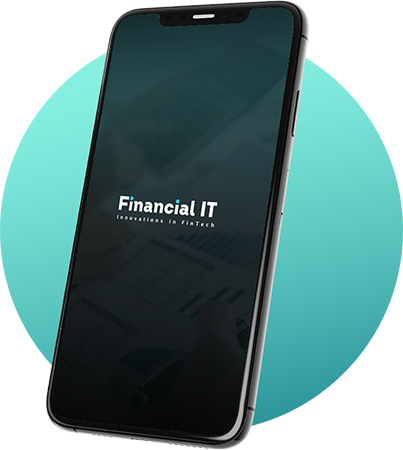Published
- 07:00 am

Finastra is bringing its next-generation payments solutions to the cloud via Microsoft Azure, Microsoft’s enterprise-ready trusted cloud platform. The move enables Finastra to deploy value-added services to clients more efficiently. Banks will benefit from streamlined onboarding, as well as faster access to new products and upgrades.
This alliance is an extension of Finastra’s cloud-based lending oversight solution that was previously launched on Azure in the US and Canadian markets in 2016. Since then, Finastra has broadened its relationship with Microsoft and is migrating its payments capabilities to Azure.
“This collaboration allows us to change how we deliver software to our customers and partners in a fundamental way,” said Nadeem Syed, CEO, Finastra. “It will enable us to bring new products to market faster and more frequently, with stability and with the highest levels of data security for which Microsoft is known. It also allows us to take a significant step forward in the creation of a platform for innovation and collaboration in financial services.”
The strategic move to work with Microsoft Azure enables Finastra to optimize existing business processes and functions, while expediting development with stability and sophistication. In today’s ever changing business landscape, banks are seeking innovative solutions that evolve with their needs while also fulfilling the ability to scale at a lower overall cost. The migration of payments solutions to Azure will accelerate Finastra’s ability to easily and effectively deploy value-added services onto its platforms and continue to meet customer demands.
Commenting on the development, Gareth Lodge, Senior Analyst at Celent, said, “Generally in the market both payment hubs and cloud have come of age – and this announcement will mean even greater benefits, with the two coming together here. Modern technology, running on modern architecture, gives not only means for greater performance at much lower running costs, but also the potential for new business models altogether, for all involved.”
Janet Lewis, Vice President of Worldwide Financial Services at Microsoft, said, “It is inspiring to work with leaders like Finastra who are helping to benefit our mutual customers in the financial services industry. By using the Microsoft Azure cloud platform, Finastra will optimize its payments solutions and ultimately better serve its customers – all while ensuring its specific security, privacy and compliance needs are met.”
Related News
- 07:00 am

Silicon Valley analytics firm FICO today announced that the latest version of its FICO® Enterprise Security Score is twice as accurate at predicting a data breach as the previous model, and more than four times as powerful as the best results claimed by competing solutions. The FICO Enterprise Security Score gives subscribers the ability to assess the forward-looking cyber breach risk of their organisation and their partners, and improves breach insurance underwriting.
Additionally, integration of industry-standard firmographic data and reference identifiers enables quicker and more assured identification of subject organisations and provides additional insight for key supply chain management tasks. FICO has incorporated this information into the product’s user interface, and has enabled streamlined entity identification by common firmographic reference identifiers.
For more information or a free trial, visit: https://securityscore.fico.com
“Accurate prediction of cyber breach in the next 12 months is the goal of the model,” said Doug Clare, FICO’s vice president for cyber security solutions. “The model powering the FICO Enterprise Security Score now has a dynamic range of more than 24X, which means that the lowest scoring organisations have a breach risk 24 times higher than those with the highest scores. Our experience with AI and machine learning led directly to this huge improvement in performance.”
The power of the FICO® Enterprise Security Score has a strong appeal for insurers dealing in cybersecurity risk.
“We selected the FICO Enterprise Security Score because of its empirical approach to scoring risk,” said Josh Ladeau, senior vice president of cybersecurity at London-based Aspen Insurance, one of the world’s top cybersecurity insurance underwriters. “The FICO cyber score presents the most accurate externally derived assessment of organisational security posture that I’ve seen, and when combined with the underwriting data we collect, will help us to shape a cyber insurance portfolio of the highest possible quality.”
FICO uses machine learning techniques to associate features describing the conditional and behavioural characteristics of organisations’ security practices with outcome data (breaches and non-breaches). The result is a high-performing supervised model that quantifies the likelihood of a significant breach event happening over a 12-month period. Because FICO collects data continuously against the entire IP address space, the training data set is always ready to absorb new breach cases, and the scoring engine is always ready to take time-dependent organisational behaviour into account in calculating the risk of breach.
“The addition of the firmographic data, including common reference identifiers, helps the score’s users understand the scope, scale, location and nature of the organisations they evaluate,” said Clare. “Understanding these characteristics helps the user categorise their vendors and business partners, and allows for a better understanding of supply chain risk exposure.”
The new scoring algorithm, integration of firmographic data and related enhancements in the user interface are now in production and in use by FICO’s subscribers.
Related News
- 04:00 am
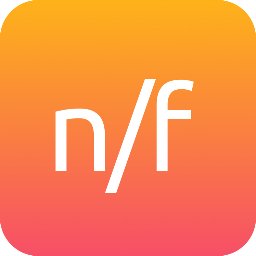
Signicat, the first and largest identity assurance provider in the world, and SDC, a full-service IT service partner for the financial sector in the Nordic countries, today announced that 83% of SDC’s Danish banking clients’ customers’ mortgage applications are processed wholly digitally. The fully digital process for application, approval and signing has reduced the time to complete the mortgage process from weeks to days — and sometimes, in markets where consumers have an electronic identity (eID), mere hours. SDC provides financial technology, including system operation and data processing services, to more than 120 banks in Denmark, Norway, Sweden and Faroe Islands.
Signicat’s digital signing solution – Sign - has removed the need for customers to visit their branch to complete a mortgage application. All this is now completed digitally — creating a process that is both fast and convenient dramatically enhancing the customer experience.
The news follows the announcement in June last year that SDC would be using Sign for transnational digital signing across financial service applications. The solution allows SDC customers to offer digital signing containing information on who signed the document, when it was signed, and the signatures validity. Customers in markets with an eID scheme, such as NemID in Denmark, can simply use their eID to sign and receive approval in just hours.
“Financial institutions have invested millions in digital transformation. Digitizing every interaction with customers, from the first mile to the last, is essential to truly capitalise on this investment,” said Gunnar Nordseth, CEO at Signicat. “Our pioneering work with SDC has dramatically accelerated the mortgage application process, resulting in positive customer feedback and, critically, fewer abandoned applications. At a time when revenue generation is more important than ever, banks must provide the fully-digital services customers demand.”
“Applying for a mortgage can be one of the most challenging and stressful processes people face. We wanted to make it as frictionless as possible,” said Nikolai Andersen, Head of R&D Digitization at SDC. “The collaboration with Signicat has created a truly digital-only process and the numbers speak for themselves. Adoption and critically conversion of applications using eSignatures is skyrocketing, especially in markets with eID schemes that accelerate the process. We look forward to exploring other ways our bank customers can benefit from eID schemes in relevant markets.”
SDC’s digital signing solution uses local eID schemes to verify identity. The eID schemes used are Bank ID in Norway and Sweden, and NemID in Denmark, mapping SDC’s footprint.
Related News
- 01:00 am
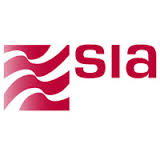
SIA has designed and produced a new platform called “SIAchain” to support financial institutions, corporates and public administration bodies in developing and implementing, in a secure, protected way, innovative applications based on blockchain technology.
Improvement and simplification of processes, optimization of costs of management and infrastructural investments, sharing of technological knowhow – these are the main factors which have led to the rapid growth of interest in the disruptive phenomenon of blockchain. A recent report by the World Economic Forum (WEF) estimated global investment in this technology by companies and organizations over the past 3 years to be 1.4 billion dollars.
Thanks to the private infrastructure SIAchain, which could use approximately 580 European network nodes within SIAnet – the fiber optic network with high speed and low latency stretching over 170,000 kilometers - a series of business applications will be launched and made available where distributed ledger technology (DLT) represents an emerging innovation to meet the requirements of specific communities of registered, approved members. In addition, SIA guarantees the organization of these communities in a context of transparency, confidentiality and security.
SIAchain can be employed in various areas such as automated check of agreements and contracts (so- called “smart contracts”), management of bank, financial and insurance services (in the case of mortgages, policies or credit risk analysis), management of digital identities (checks and records of authorized accesses to systems and applications), tracking of ownership of goods and property (“smart property”), management and recording of government, health and administrative data, etc.
"SIA is continuing in its traditional path of innovation through the development of a technology infrastructure capable of supporting communities belonging to different product sectors in the implementation of applications based on open organizational logics," commented Massimo Arrighetti, CEO of SIA. "The new architecture, thanks to its unique technological characteristics, is also an advanced tool with high performance and safety features."
Related News
- 06:00 am
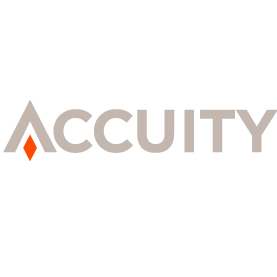
Accuity, the leading provider of financial crime compliance, payments and know-your-customer (KYC) solutions, announced today that it has successfully integrated its financial crime screening solutions with Corda - R3’s financial grade distributed ledger technology (DLT) platform.
Accuity’s innovation team, working closely with R3, has developed a solution that enables financial crime screening of customers and transactions on Corda. For financial institutions, this would facilitate financial crime compliance with regulatory requirements of programs such as the EU Fourth Anti Money Laundering Directive, the USA PATRIOT Act, the US Treasury's Office of Foreign Assets Control (OFAC) and the MAS Notice 626.
Hugh Jones, President and CEO at Accuity, said: “We believe Distributed Ledger Technology (DLT), inspired by the breakthrough blockchain concepts, has the potential to disrupt how financial services are offered and transacted. Enabling regulatory compliance is absolutely essential for this new technology to progress from proof of concept to production systems.”
“We are now looking at working with our customers to pilot this solution for a number of other use cases such as KYC, payments and trade finance compliance,” he added.
Todd McDonald, Co-Founder and Head of Partnerships, R3, added: “R3 has developed Corda to enable a safe and efficient distributed ecosystem for financial services to guarantee a consistent, accurate, auditable, reportable record. KYC/AML Compliance is a key regulatory requirement for financial transactions. Accuity is the known market leader in the area of financial crime compliance screening. We look forward to leveraging our combined expertise to address solutions in this space for the global financial services industry with innovative distributed ledger-based technology.”
Accuity’s Fircosoft suite of data-enabled technology solutions, delivered through a high-touch consultative partnership, provides the versatile resources that help control risk, increase efficiencies, meet regulatory demands, and avoid damage to the good names of individuals and their firms.
Related News
- 06:00 am
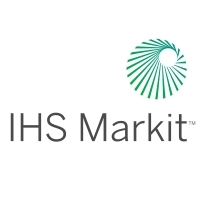
44 Million Credentials Downloaded by 2021
Fewer than 1 million mobile credentials were downloaded by end users of mobile access solutions in 2016. However, this number is expected to increase rapidly during the next five years, reaching 44 million downloads by 2021.
The reason for the strong growth is two-fold. Market sentiment reveals that the use of mobile credentials in access control is not only a strong value proposition on its own, but it also holds the potential to unlock a more integrated and better value system for the end user while also creating new services that can support new revenue streams for providers of mobile access going forward. Also, mobile credentials are currently not competing against physical cards, but instead are being marketed as a complement to traditional offerings; therefore, the potential market is much larger.
The end users most likely to transition to a full mobile credential-only system are those who have to deal with large numbers of temporary visitors or who experience exceptionally high card turnover rates. Examples include building sites at which contractors require access to varying locations, as well as universities and hotels where large numbers of cards have to be replaced each year.
The adoption rate of mobile-capable readers currently far surpasses that of mobile credential downloads. This is primarily for two reasons. First, a significant proportion of the access control smart card reader installed base is mobile capable by default. And second, many end users are opting to install mobile-capable readers despite having no intention of rolling out mobile access in the near future. They are doing so simply to future-proof their systems.
The Installed Base Is Still in the Process of Being Seeded with Mobile-capable Readers
In 2016, just 7 percent of non-residential access control readers shipped were mobile capable. However, global shipments are forecast to grow to around 20 percent by 2021.
Mobile-capable readers are access control readers with either near-field communication (NFC) or Bluetooth Low Energy (BLE) data-transfer capability. To be included within the IHS Markit definition for the term, a mobile-capable reader must be able to interact with a smartphone in such a way that the smartphone directly replaces a key or other physical credential.
The Americas region is the most mature market in terms of adoption of mobile-capable readers. In 2016, over 17 percent of access control readers shipped in the region were mobile capable.
Shipments of mobile-capable readers are rising due to the following:
- A growing number of smart card readers are becoming mobile capable by default as manufacturers add NFC mobile communication functionality — often at no additional cost to the end user
- Access control manufacturers are adding readers to their offerings with Bluetooth modules that can be used for mobile communication, or they are selling Bluetooth module add-ons separately
Smart card readers are by far the most common type of mobile-capable reader, accounting for 98.5 percent of mobile-capable reader unit shipments in 2016.
iOS 11 Could Result in a Resurgence of NFC-based, Mobile-capable Readers
The vast majority of mobile credential suppliers now accept that Bluetooth Low Energy is the preferred format of choice. Although the industry originally opted for NFC as its number-one data interface, the lack of support from Apple led suppliers to switch to the more ubiquitous Bluetooth format. The launch of Bluetooth Low Energy v4.0 of the Bluetooth Special Interest Group in 2013 also played a key role in solidifying Bluetooth’s position as the leading communication technology.
However, with the release of iOS 11 in September, Apple opened up access to the NFC chip in the iPhone 7 and 7 Plus, as well as future iPhone generations. This has huge potential to reinvigorate interest from mobile access providers in NFC-based smartphone communication. Historically, using the payment market as an example, the use of mobile-based contactless payments started to gain market share rapidly only after Apple launched Apple Pay. A similar scenario could occur in the access control space for these reasons:
- End users, after experiencing the payment and transportation ticketing migrations, are now very familiar with the NFC process and could be easily educated about the use of NFC in the access control space
- Many mobile access providers in the market today are access control equipment manufacturers that have vast amounts of experience working with similar technology through their production of MIFARE smart card readers
Increasing Adoption Is Only Half the Battle for Providers
Despite selling mobile credentials for the better part of three years, providers have yet to converge on the use of a particular business model. Some providers are opting to charge the end user directly for the credentials (in a similar fashion to physical credentials), others are trialing subscription fee-based pricing models, while others are simply giving away the mobile credentials for free.
Providers that are not charging for mobile credentials are hoping to use this as a unique selling point to win key projects or increase their share of the reader equipment market.
IHS Markit expects that as the number of suppliers that are providing mobile credentials for free grows, the average selling price of the credentials will decrease as other companies lower their prices to stay competitive.
Related News
- 01:00 am
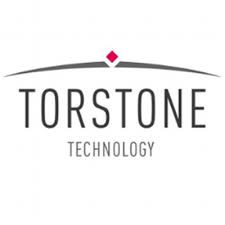
Torstone Technology, a leading provider of post-trade securities and derivatives processing, today announces that Peel Hunt, an independent corporate broking, advisory and trading house focusing on mid & small-cap companies, is expanding its use of Inferno for its US business, Peel Hunt Inc.
In signing a multi-year deal to use Inferno, Peel Hunt now has more flexibility to develop its US business and respond more quickly to client and market requirements. Inferno is a flexible, modern, cost-effective platform which will allow Peel Hunt to run its operations efficiently and with reduced operational risk. The system is also scalable which means that Torstone Technology can quickly respond to any subsequent requirements that Peel Hunt may have as it expands its operations in the US market.
Commenting on the deal, Sunil Dhall, Chief Finance and Operating Officer, at Peel Hunt said: “We are pleased to be expanding our partnership with Torstone Technology to support our US business, having used Inferno for over 7 years within Peel Hunt. This extension of our relationship is a testament to Torstone Technology’s simple implementation of their cost-effective and flexible technology enabling us to run our post-trade operations efficiently.”
Torstone’s CEO, Brian Collings commented: ‘The extension of our offering to support clients with US operations is a key component of our global growth strategy. We look forward to further strengthening our relationship with Peel Hunt and to developing our solution to further ease the firm’s ability to operate in the US market.”
Related News
- 06:00 am

Mendix, the fastest and easiest platform to create and continuously improve mobile and web applications, announced today that Forrester Research has ranked the company as a Leader in “The Forrester Wave™: Low-Code Development Platforms for AD&D Pros, Q4 2017.” Since its inception, Mendix has consistently been at the forefront of the low-code development platforms market, delivering numerous industry-first innovations and unrivalled architectural sophistication for supporting large-scale, enterprise deployments.
The new report underscores the strategic importance and value of low-code development platforms. Referencing a survey of AD&D leaders, Forrester highlights how low-code platforms help IT organisations dramatically speed application and innovation delivery. The survey also reveals that low-code platforms are being leveraged for large, mission-critical applications—dispelling a common myth that they’re suitable only for small, departmental apps.
Based on Forrester’s 26-criteria evaluation, Mendix was named a Leader in low-code development platforms for application development and delivery (AD&D) pros. In the report, Forrester notes that, “Mendix continues to innovate in new use cases and deepen its features across the board. Its decision to base its low-code environment on Cloud Foundry also paid big dividends, as SAP — a Cloud Foundry distributor — adopted the vendor’s platform as its worldwide low-code solution. That partnership is the first by one of the four largest enterprise vendors (IBM, Microsoft, Oracle, and SAP) with a low-code platform vendor and should accelerate Mendix’s already substantial growth.”
“We believe our recognition as a Leader in this low-code platform evaluation is validation of our track record of technology leadership and the breadth of our strategic partnerships,” said Derek Roos, CEO at Mendix. “Mendix has become the de facto standard for low-code development in the enterprise, enabling both professional and citizen developers to build apps in support of large-scale deployments.”
Mendix Uniquely Enables Low-Code Development in an Enterprise Context
Combining full-stack visual development, a cloud-native architecture, and an integrated set of tools for the complete application lifecycle, Mendix is uniquely suited for low-code development within an enterprise context. Mendix enables organisations to:
- Empower a continuum of developers – Mendix enables a range of users to visually model full-stack applications. The Desktop Modeler provides deep features that enable professional developers to balance higher productivity with control, while the Web Modeler’s WYSIWYG environment enables citizen developers to rapidly build prototypes.
- Promote iterative development – With agile project management capabilities and a built-in feedback loop, Mendix promotes rapid, iterative development in collaboration with the business. Teams can quickly deliver MVPs that address a few key features, and then leverage user feedback to enhance applications incrementally over time, delivering ongoing value.
- Create smart experiences – Mendix enables developers to incorporate technologies like IoT, AI, machine learning, and blockchain into their apps, without needing specialised skills. They can leverage pre-built connectors available in the Mendix App Store, or build their own connectors and make them available to less technical developers as native model elements in the platform.
- Deploy web-scale applications – Mendix’s cloud-native, stateless architecture enables out-of-the-box high availability and fail over to support web-scale deployments. In addition, through its support of Cloud Foundry, Docker, and Kubernetes, Mendix offers unrivalled deployment flexibility and portability across public, private, and virtual private clouds, or on-premises.
Related News
- 04:00 am

Aviva plc (“Aviva”) today announces that it has agreed to sell its entire 49% shareholding in its joint venture in Taiwan, First Aviva Life (“Aviva Taiwan”) to Aviva’s joint venture partner, First Financial Holding Co. Ltd. (“FFH”).
Following a strategic review of Aviva Taiwan, Aviva concluded that the business is not central to the group’s strategy to focus on markets where it can achieve scale and profitability or have a distinct competitive advantage.
The transaction has a negligible impact1 on Aviva’s IFRS net assets, Solvency II capital position and IFRS operating profit. The transaction is subject to customary closing conditions, including regulatory approval, and is expected to complete in 2018.
Chris Wei, Executive Chairman of Aviva Asia and Global Chairman of Aviva Digital, said: “We have refocused Aviva’s Asian business on core markets where we have excellent opportunities to grow. With our strong partners and our digital focus, we are intent on disrupting the traditional insurance market.”
Related News
- 03:00 am

IBM (NYSE: IBM) today announced it is building an industry-first insurance platform on the IBM Cloud that aims to improve the processes and economics for new product development, underwriting, and benefits delivery.
Built in collaboration with MetLife (NYSE: MET) and Majesco (NYSE MKT: MJCO), the IBM Insurance Platform will feature cognitive computing, data analytics and integration and security capabilities designed to help insurers expand access to their products and capture new customers.
"Our Industry Platforms are designed in collaboration with our clients and partners and intended to dramatically improve traditional business models using deep industry expertise and advanced technologies such as AI, cloud and blockchain," said Bridget van Kralingen, senior vice president, IBM Industry Platforms. "In the case of insurance, carriers will be able to inject greater innovation and speed into their operating models, and consumers will experience a broader range of products tailored to their individual needs."
IBM works with 95 percent of the world's top insurers. By combining insights from those engagements, and with deep industry expertise contributed by MetLife, the IBM Insurance Platform will help carriers better harness their expansive data sets to improve product mix and customer experience. Delivered as a service, the platform will also help insurers sense and respond to the market faster while reducing IT infrastructure and maintenance costs.
"This new direction provides us with the opportunity to introduce to the market a unique business model unlike any other. The strategy represents innovation in our approach to growth and is a testament to the reality that every company needs to become a technology company in order to survive," said Marty Lippert, MetLife executive vice president and head of Global Technology & Operations. "It brings together the best of MetLife's insurance expertise and capabilities with leading IBM technology into a single, highly scalable, low cost insurance industry solution."
MetLife will pioneer the use of this industry-first, end-to-end digital solution, beginning with its small business customers. MetLife will have the ability to tailor and scale its benefit offerings from quote to claim. Through a new digital experience, customers and brokers will have access to a broader selection of affordable group benefits, including: life, dental, vision, disability, voluntary and other products.
"Small business is an attractive growth segment for MetLife. We know from speaking to many business owners and brokers that they believe employee benefits are important in attracting, retaining and engaging talent. We're excited this platform will give our customers greater access to the benefits they need through a simpler, affordable experience," said Michel Khalaf, MetLife's president of U.S. Business and EMEA.
According to an analysis of A.M. Best Data, the U.S. group benefits market was approximately $140 billion in 2016. Increased customer expectations and new market entrants highlight the need for insurance carriers to bring new offerings to market that attract customers while cost-effectively servicing existing ones.
Majesco, a multinational provider of insurance technology software and an established IBM partner, is contributing to the platform with components to enhance underwriting, policy administration, billing and claims.
As IBM advances the platform, new capabilities will be added including the ability to integrate with blockchain networks to provide trusted, highly secure, permissioned transactions, and the option to incorporate regulatory compliance data and third-party software.
The IBM Insurance Platform represents another important expansion of IBM's Industry Platforms business, formed to deliver comprehensive offerings for specific industries. IBM has also launched specialized industry platforms in other areas including healthcare, regulatory compliance for banking and financial markets.

